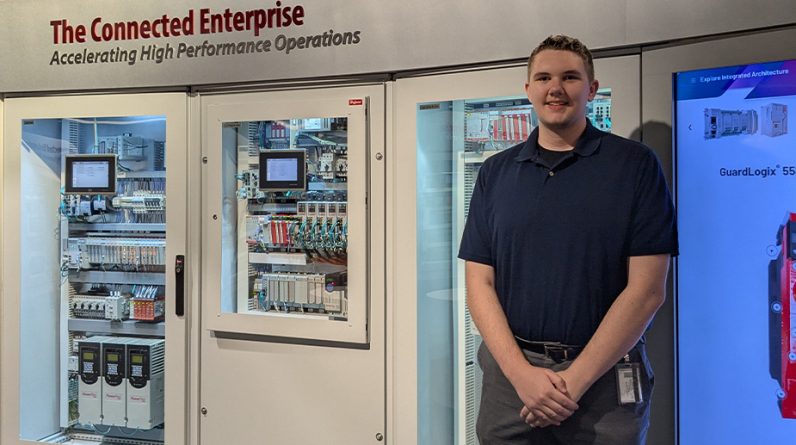Ahead of NRF 2023, the retail industry’s largest event, Google Cloud today introduced four new and updated AI technologies to help retailers transform their in-store shelf checking processes and enhance their ecommerce sites with more fluid and natural online shopping experiences for customers.
A new shelf checking AI solution, built on Google Cloud’s Vertex AI Vision, utilizes Google’s database of facts about people, places and things, giving retailers the ability to recognize billions of products to ensure in-store shelves are right-sized and well-stocked. Furthermore, in an update to its Discovery AI solutions, Google Cloud introduced a new personalization AI capability and new AI-powered browse feature to help retailers upgrade their digital storefronts with more dynamic and intuitive shopping experiences. Finally, Google Cloud’s Recommendations AI solution launched new machine learning capabilities that empower retailers to dynamically optimize product ordering and recommendations panels on their ecommerce pages and deliver personalized suggestions for repeat purchases.
“Upheavals over the last few years have reshaped the retail landscape and the tools retailers need to be more efficient, more compelling to their customers, and less exposed to future shocks,” said Carrie Tharp, VP of Retail and Consumer, Google Cloud. “Despite uncertainty, the retail industry has enormous opportunity. The leaders of tomorrow will be those who address today’s most pressing in-store and online challenges with the newest technology tools, such as artificial intelligence and machine learning.”
New shelf checking AI helps retailers improve product availability
The problem of low or no inventory on in-store shelves is a troubling one for retailers. According to a NielsenIQ analysis of on-shelf availability, empty shelves cost U.S. retailers $82 billion in missed sales in 2021 alone. While retailers have tried different shelf-checking technologies for years, their effectiveness has often been limited by the resources needed to create reliable AI models to detect and differentiate products—from the different flavors of jam and jelly, to the dozens of types of toothbrushes.
Now available in preview globally, Google Cloud’s new AI-powered shelf checking solution can help retailers improve on-shelf product availability, provide better visibility into what their shelves actually look like, and help them understand where restocks are needed. Built on Google Cloud’s Vertex AI Vision and powered by two machine learning models—a product recognizer and tag recognizer—the shelf checking AI enables retailers to solve a very difficult problem: how to identify products of all types, at scale, based solely on the visual and text features of a product, and then translate that data into actionable insights.
Retailers don’t have to expend time, effort, and investment into data collection and training their own AI models. Leveraging Google’s database of billions of unique entities, Google Cloud’s shelf checking AI can identify products from a variety of image types taken at different angles and vantage points—an especially difficult task. Retailers will have a high degree of flexibility in the types of imagery they can supply to the shelf checking AI. For example, a retailer can use imagery from a ceiling-mounted camera, an associate’s mobile phone, or a store-roaming robot on shelf-checking duty.
Now in preview, this technology is expected to be generally available to retailers globally in the coming months. Importantly, a retailer’s imagery and data remains their own and the AI can only be used for the identification of products and price tags.
AI transforms the digital window shopping experience
People don’t always know what they want. That’s why they window shop or browse through websites, looking for inspiration.
To help retailers make the online browsing and product discovery experience more modern, faster, intuitive, and fulfilling for shoppers, Google Cloud today introduced a new AI-powered browse feature in its Discovery AI solutions for retailers. The capability uses machine learning to select the optimal ordering of products on a retailer’s ecommerce site once shoppers choose a category, like “women’s jackets” or “kitchenware.”
Over time, the AI learns the ideal product ordering for each page on an ecommerce site using historical data, optimizing how and what products are shown for accuracy, relevance, and likelihood of making a sale. The feature can be used on a variety of ecommerce site pages, from browse, brand, and landing pages, to navigation and collection pages.
Historically, ecommerce sites have sorted product results based on either category bestseller lists or human-written rules, like manually determining what clothing to highlight based on seasonality. This browse technology takes a whole new approach, self-curating, learning from experience, and requiring no manual intervention. In addition to driving significant improvements in revenue per visit, it can also save retailers the time and expense of manually curating multiple ecommerce pages. The new tool is now generally available to retailers worldwide supporting 72 languages.
More personalized search and browsing results with machine learning
Research commissioned by Google Cloud found that 75% of shoppers prefer brands that personalize interactions and outreach to them, and 86% want a brand that understands their interests and preferences.
To help retailers create more fluid and intuitive online shopping experiences, Google Cloud today introduced a new AI-driven personalization capability that customizes the results a customer gets when they search and browse a retailer’s website. The technology turbo-charges the capabilities of Google Cloud’s new browse offering and existing Retail Search solution.
The AI underpinning the new personalization capability is a product-pattern recognizer that uses a customer’s behavior on an ecommerce site, such as their clicks, cart, purchases, and other information, to determine shopper taste and preferences. The AI then moves products that match those preferences up in search and browse rankings for a personalized result. A shopper’s personalized search and browse results are based solely on their interactions on that specific retailer’s ecommerce site, and are not linked to their Google account activity. The shopper is identified either through an account they have created with the retailer’s site, or by a first-party cookie on the website.
As with all Google Cloud solutions, customers own and control their data—information on customer preferences stays with the retailer. This technology is now generally available to retailers worldwide.
AI increases retailers’ bottom line with better recommendations
Product recommendation systems are now a critical component of any retailer’s ecommerce strategy for good reason: online retail sales are expected to reach more than $8 trillion by 2026. However, retailers have long had difficulty determining which panels to display on their websites, how to effectively arrange them, and how to coordinate content that is both relevant and personalized. Google Cloud’s Recommendations AI solution uses machine learning to help retailers bring product recommendations to their shoppers.
New upgrades to Recommendations AI, announced today, can make a retailer’s ecommerce properties even more personalized, dynamic and helpful for individual customers. For example, a new page-level optimization feature now enables an ecommerce site to dynamically decide what product recommendation panels to uniquely show to a shopper. Page-level optimization also minimizes the need for resource intensive user experience testing, and can improve user engagement and conversion rates.
In addition, a recently added revenue optimization feature uses machine learning to offer better product recommendations that can lift revenue per user session on any ecommerce site. A machine learning model, built in collaboration with DeepMind, combines an ecommerce site’s product categories, item prices, and customer clicks and conversions to find the right balance between long-term satisfaction for shoppers and revenue lift for retailers. Finally, a new buy-it-again model leverages a customer’s shopping history to provide personalized recommendations for potential repeat purchases.
Compared to baseline recommendation systems used by Google Cloud customers, Recommendations AI has shown double digit uplift in conversion and clickthrough rates in experiments controlled by retailers using the technology. The new page-level optimization, revenue optimization and buy-it-again models are now globally available to retailers.





